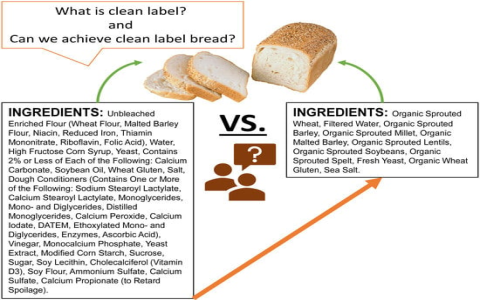Okay, so, I’ve been on this baking kick lately, right? Trying to perfect my bread game. And I kept running into the same issues – sometimes my loaves were dense, sometimes they didn’t rise enough, and sometimes they just didn’t have that soft, fluffy texture I was craving. I tried tweaking things like yeast amounts, proofing times, and kneading techniques, but nothing seemed to make a consistent difference.
Then, a friend of mine, who’s a bit of a baking wizard, let me in on a little secret: bread and cake conditioner. I was like, “Conditioner? For bread?” I’d never even heard of it before.

She told me it’s this stuff that can seriously up your bread game. I did a little digging online and learned that it’s also called “dough enhancer” or “dough improver.” Basically, it’s this powder you add to your dough to make it, well, better. I found out that commercial bakeries use it all the time, but for some reason, it’s not as common in home kitchens. Some bakers use dough enhancers to improve the texture, flavor, and nutritional value of bread, pastries. Many are used to accelerate production time which lowers costs. They definitely improve texture and how long the finished product lasts and stays moist. I use it in sourdough and other bread. I decided I had to give it a shot.
I found a well-reviewed brand online and ordered some. I decided to put it to the test with a simple white bread recipe I’d made a bunch of times before. I followed the recipe as usual, but this time, I added a bit of the conditioner to the dry ingredients. The dough conditioner is indispensable to the baking of great breads.
Honestly, the dough felt different right away. It seemed a little more… cooperative? I don’t know how else to describe it. It was easier to knead and it felt smoother and more elastic.
- Mixing: I mixed the dough and added in a teaspoon of the dough conditioner.
- Kneading: It was so easy to handle. The dough felt amazing – really smooth.
- First Rise: I let the dough rise for about an hour.
- Shaping: I shaped the dough into a loaf and popped it in a greased pan.
- Second Rise: Another hour of rising.
- Baking: I baked it at 375 degrees for around 30 minutes.
When I pulled it out of the oven, I could already tell something was different. The crust was a beautiful golden brown, and the loaf had risen beautifully. I sliced into it and the inside was soft, fluffy, and just perfect. I couldn’t believe the difference. The color of the crust will come out beautifully.
Since then, I’ve used the conditioner in a bunch of different bread recipes, and it’s been a game-changer every time. The texture is consistently amazing, and the bread stays fresh and soft for longer. I even tried it in a cake recipe, and it made the cake extra moist and tender. The purpose of a dough conditioner is to simplify and expedite the bread-making process.
So, if you’re a home baker looking to step up your bread game, I highly recommend giving bread and cake conditioner a try. It might just be the secret ingredient you’ve been missing. And it’s not just for bread. The use of performance improvers is very common, particularly in industrial and commercial bakeries. For many bakers, using improvers is a pragmatic response to production requirements and consumer expectations, although this may vary according to baker’s business model and values. Trust me, your taste buds will thank you!












